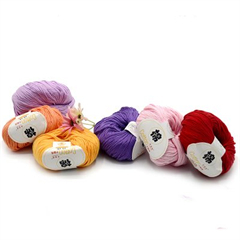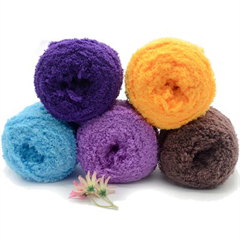1. Shearing:
- The journey begins on a farm where sheep are raised for their wool. Sheep shearing is the process of carefully removing the fleece or wool from the sheep’s body. Experienced shearers use electric clippers to do this without harming the sheep.
2. Sorting and Skirting:
- After shearing, the fleece is sorted to separate the different grades of wool. The finest, softest fibers come from the sheep’s shoulders and sides, while coarser fibers come from the legs and belly.
- The fleece is also skirted, which involves removing any dirty or unusable portions, such as vegetable matter or stained wool.
3. Washing:
- The raw wool still contains lanolin (a natural oil) and dirt. To prepare it for processing, the wool is thoroughly washed and rinsed. This process is critical to removing impurities and creating clean, workable fiber.
4. Carding:
- Carding is the process of brushing the wool to align the fibers and remove any remaining impurities. Carding machines or hand carders can be used for this purpose.
5. Combing (Optional):
- In some cases, especially for producing very fine and smooth yarns, the wool may undergo combing, which further refines and straightens the fibers.
6. Spinning:
- Spinning is the process of twisting the carded or combed fibers together to create a continuous strand of yarn. This can be done using a spinning wheel or spindle. The thickness and texture of the yarn can be controlled by adjusting the tension and twist during spinning.
7. Plying (Optional):
- Some yarns are plied, which means two or more strands of spun yarn are twisted together in the opposite direction. Plying adds strength and stability to the yarn and can create interesting textures.
8. Skeining and Hanking:
- Once the yarn is spun or plied, it’s wound onto large skeins or hanks. This makes it easier to handle and allows for final quality control.
9. Finishing:
- The skeins of yarn may undergo additional processes like setting the twist, which involves soaking the yarn and allowing it to dry to set the final twist and shape of the yarn.
10. Dyeing (Optional): – Natural wool yarn is often a creamy white color, but it can be dyed using various methods to achieve a wide range of colors and patterns.
11. Packaging: – After all processing steps are complete, the yarn is packaged into skeins, balls, or cones for sale to consumers. The skeins are often labeled with information about the yarn’s fiber content, weight, and care instructions.
12. Distribution: – Yarn is distributed to craft stores, online retailers, and other outlets, making it available to knitters and crocheters worldwide.
The journey of yarn from sheep to skein is a labor-intensive process that involves the efforts of shepherds, shearers, textile workers, and artisans. Each step in the process plays a crucial role in producing yarn of various qualities, textures, and colors, ready to be transformed into beautiful handcrafted items by skilled fiber artists.






















